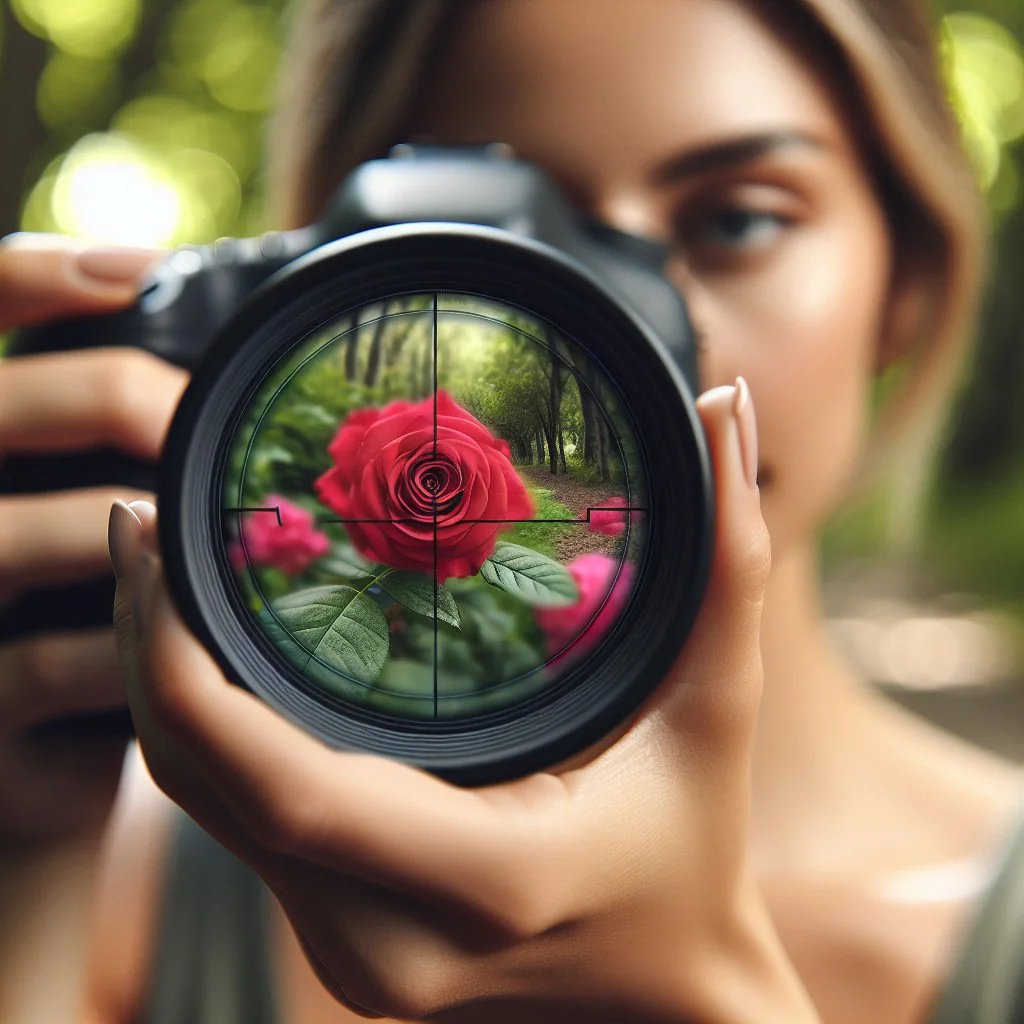Join Photography Courses Coventry or Online
Transform Your Vision into Stunning Images
Ready to capture the world through your lens? Whether you're picking up a camera for the first time or working toward professional recognition, photography education can fast-track your creative journey. At Alan Ranger Photography, I've spent over two decades helping aspiring photographers in Coventry and online discover their unique vision and master the technical skills to bring it to life.
With 30% of UK adults now actively pursuing photography as a hobby, there's never been a better time to develop your skills with expert guidance. The difference between self-teaching and structured mentoring often comes down to years of trial and error versus focused, accelerated growth.
For any queries or clarifications, book a free consultation session in my calendar or call me at (0781-701-7994).
Photography Courses Options:
Face-to-Face, Small Groups or 1-2-1
Choose the right photography course for you.
Why Choose Professional Photography Tuition?
Many photographers wonder whether formal courses truly make a difference. The answer lies in what you value most: rapid skill development, avoiding costly mistakes, and building a portfolio that opens doors. Self-taught photographers often spend years discovering techniques that structured courses can teach in weeks, while also developing habits that may need correcting later.
Professional tuition offers something invaluable that online tutorials cannot: personalised feedback on your specific work, real-time problem-solving, and a clear pathway from beginner to advanced techniques. You'll learn not just how to operate your camera, but how to see creatively, understand light intuitively, and develop your distinctive photographic voice.
Learn Photography Options
-
Photography Courses Coventry
Suppose you are new to photography and a DSLR or want to improve your understanding. In that case, the three-week Beginners Photography Course will teach you digital photography basics and give you the perfect foundations. Most clients follow on from this to do the photo editing with a Lightroom course (book both courses and get money off - beginners camera courses ) to learn how to edit images with a professional look. You can also combine classroom theory with practical tuition on location with a photography workshop.
-
If you know the basics of camera settings, composition, and editing, there is an excellent range of courses and classes to improve and refine your skills. You could take that next step in photo editing to learn how to add polish and emotion/balance to your existing images. Or consider pursuing a photographic qualification with the RPS.
-
Flexible. Learn photography in the areas you need it at your own pace.
The one-to-one private photography tuition is for aspiring photographers who prefer personal tuition and wish to have their learning designed specifically to their needs. Is this for me? Private lessons are available to photographers of any skill level who feel one-to-one attention will improve their learning. The benefit is it’s based on what you want to learn and delivered at a time suited to your availability. Lessons can include camera technique, photo editing, practical location shoots or a mixture. There are no other students - the time you pay for is dedicated to your style and pace of learning. I also offer the standard courses as a block of four x 2hr sessions for the price of three.
-
All photography lessons are structured and supported by class notes with a mix of theoretical explanations and practical exercises for you to learn from and assess your work by a professional photographer. If you are unable to attend in Coventry you could consider the free online photography course
About Alan Ranger: Your Photography Mentor
As a professional photographer and educator, I bring extensive real-world experience to every lesson. My work has taken me from intimate portraits to expansive landscapes, and I've mentored hundreds of students through their photographic journeys, from complete beginners to photographers achieving RPS distinctions.
What sets my teaching approach apart is the combination of technical precision and creative exploration. I don't just show you button combinations; I help you understand the 'why' behind every decision, so you can adapt techniques to any situation you encounter. My courses blend classroom theory with practical application, ensuring you can immediately apply what you learn to create images you're proud to share.
Every student I work with has different goals, whether that's capturing better family memories, building a professional portfolio, or simply finding a creative outlet that brings joy. That's why flexibility sits at the heart of everything I offer..
Your Photography Learning Pathway
Think of your photography education as a journey rather than a destination. Most of my students begin with fundamental camera operation and composition, quickly progress to professional photo editing, then choose their own adventure: some pursue creative projects and exhibitions, others work toward professional qualifications, and many simply continue refining their craft through ongoing mentoring.
The beauty of structured photography education is that each course builds naturally on the previous one, creating a coherent framework for growth. You're not collecting random skills; you're building a complete photographic foundation that supports any creative direction you choose to explore.
Beginner’s Photography Camera Course
For Complete Beginners: Building Your Foundation
If you've recently purchased a DSLR or mirrorless camera and feel overwhelmed by all those buttons and menus, you're in exactly the right place. The three-week Beginners Photography Course demystifies your camera and teaches you to think like a photographer, not just operate equipment.
What you'll discover: How exposure really works, and how to predict what your camera will capture before you press the shutter. By week three, you'll confidently shoot in manual mode and the important settings on the camera
The course runs as weekly two-hour evening classes (19:00-21:00) in Coventry, with comprehensive class notes supporting every session. Each week balances theoretical explanation with practical exercises you'll review together, creating a supportive learning environment where questions are welcomed. Also available as private tuition if you prefer personalised pacing.
£150
Beginners Portrait Course
Portrait Photography: Capturing Authentic Connection
Great portrait photography transcends simply pointing a camera at someone. It requires understanding light, directing subjects naturally, and creating an environment where genuine personality emerges. The one-day Beginners Portrait Course introduces you to studio lighting fundamentals, optimal camera settings for portraits, and techniques for making subjects feel comfortable and confident.
You'll work with models in a professional studio setting, experimenting with different lighting setups and learning what works for different faces and moods. By day's end, you'll understand not just the technical side of portraiture, but the interpersonal skills that distinguish memorable portraits.
Investment: From £195 (Saturday or Sunday, 9am-5pm in Coventry).
Beginners Photo Editing Course
Mastering Photo Editing: Where Images Come Alive
Great photography doesn't end when you lower your camera. Professional photo editing transforms good images into exceptional ones, adding polish, emotion, and the specific mood you envision.
The three-week Lightroom Photo Editing Course breaks down the editing process into clear, manageable techniques. You'll learn how professional photographers approach their workflow, which adjustments create the biggest impact, and how to develop a consistent editing style that defines your work.
What you'll master: Non-destructive editing fundamentals, colour correction, localised adjustments that draw the viewer's eye, and how to rescue challenging images most people would discard. The course includes managing your growing photo library efficiently, so you can always find your best shots.
Classes run weekly for three evenings (19:00-21:15) in Coventry, with plenty of time to ask questions about your specific images.
£150
Intermediates Project Course
Six-Month Portfolio Project Course
The Intermediates Project Course represents a significant commitment to your photographic growth. Over six months, you'll meet fortnightly or monthly (nine classes total, each 2.5 hours) to develop a cohesive body of work culminating in a final exhibition.
This isn't just about making individual good images; it's about creating a portfolio that tells a story and demonstrates your unique perspective. You'll explore conceptual development, creative problem-solving, advanced techniques, and the art of sequencing images into a powerful narrative. The course concludes with a group exhibition showcasing everyone's work, providing real-world experience presenting photography publicly.
Investment: £495 for six months (10 classes total, 19:00-21:15 in Coventry).
Flexible Learning Options for Your Schedule
Photography education should fit your life, not force you to rearrange everything around fixed schedules. That's why I offer multiple ways to learn, each designed for different preferences and availability.
Private Lessons Face-to-Face
One-to-One Private Lessons: Completely Personalised
Some photographers prefer the focused attention and customised curriculum that private lessons provide. Private photography tuition allows us to design each session around exactly what you want to learn, whether that's mastering specific camera techniques, editing your portfolio, preparing for a particular shoot, or anything else.
Private lessons work especially well if you have an irregular schedule, learn better through individual attention, or want to progress faster than group class pacing allows. You can also book four 2-hour private sessions for the price of three, making extended personalised tuition more accessible.
(Monday-Friday 8am-5pm or 6pm-9pm, weekends 8am-5pm, in Coventry or your location).
From £65 per hour
Mentoring Online - Monthly Assignments
Monthly Photography Mentoring: Sustained Growth
Consistent practice with regular feedback accelerates improvement faster than intensive bursts of learning. The Monthly Assignment Mentoring program gives you structured projects each month covering different photography genres, along with one-to-one Zoom feedback sessions reviewing your submitted images.
This subscription-based approach means you can start and stop anytime to suit your availability, making it ideal for photographers who want ongoing guidance without long-term commitments. Each month you'll receive a new assignment with examples and support notes, shoot three images on that theme, then discuss them with me in a private monthly review session.
Investment: From £20 per month (flexible monthly subscription, online via Zoom).
Private Lessons Online
Online Learning: Professional Guidance from Home
Location shouldn't limit your access to quality photography education. My online lessons use Zoom for screen sharing and remote support, making distance learning surprisingly effective for both camera technique and photo editing. You'll share your screen for editing guidance or point your camera at your equipment for setup help, creating an interactive experience that rivals in-person instruction.
Investment: From £37 per hour (flexible dates and times to suit you, with discount bundles for multiple lessons available).
Available in hourly blocks from £37 per hour
RPS Distinctions Mentoring Course
Pursuing Professional Recognition: RPS Distinctions
For photographers serious about professional credibility, Royal Photographic Society distinctions represent the UK's most respected photographic qualifications. The RPS Distinctions Mentoring Course guides you through creating a cohesive panel of images that meets RPS standards for technical excellence, creativity, and artistic vision.
This classes (each one hour) spreads over twelve months, giving you flexibility to schedule sessions when you need them while working on your panel. We'll refine your concept, critique your images, and prepare you for the submission and assessment process. It's challenging, rewarding, and career-defining for those pursuing professional photography.
Investment: From £50 online via Zoom
Free Online Course and Options
Enrol today to kickstart your photography. You can use the free online photography course anytime, or check the course schedule to join one of our courses or mentoring schemes.
Start Learning Free: 60-Module Online Photography Course
Not ready to commit to paid tuition yet? I offer a comprehensive free online photography course covering 60 modules across camera settings, essential gear, composition techniques, photography genres, and practical assignments. It's a substantial resource designed to give you a solid foundation at your own pace, with no obligation.
What's included:
15 modules on key camera settings
10 essential gear and accessory guides
10 composition technique modules
10 photography genre topic guides
15 practical assignments to apply your learning
Finding the Right Course for Your Goals
If you're completely new to photography, start with the Beginners Photography Course to build camera confidence, then immediately follow with the Photo Editing Course for a complete foundation.
If you understand your camera but struggle with editing, Jump straight into the Lightroom Photo Editing Course. Professional editing skills dramatically improve even older images and help you develop a recognisable style.
If you want personalised attention, Private lessons offer the fastest path to your specific goals, especially if you have particular techniques you want to master or need flexible scheduling around work or family commitments.
If you're aiming for professional development, The RPS Distinctions Mentoring Course provides credibility and structure for building a professional portfolio that opens doors to commissions and exhibitions.
If you want sustained, affordable guidance, Monthly assignment mentoring keeps you actively shooting with expert feedback at a price point that makes long-term participation practical.
Can't decide? Book a free consultation or call me at 0781-701-7994 to discuss which pathway suits your situation best. These conversations help me understand your goals and recommend the most effective route to achieving them.
FAQs
-
In my twenty-plus years teaching photography, I've found that photography itself isn't inherently difficult; what's challenging is cutting through the overwhelming volume of information available online. Students often arrive confused not because photography is hard, but because they've consumed contradictory advice from countless sources without a clear framework to make sense of it all.
Structured courses solve this by presenting techniques in logical sequence, ensuring each skill builds on previous knowledge. You learn not just what to do, but why it works and when to apply it. Most of my beginners students operate their cameras confidently in manual mode within three weeks, something that often takes self-taught photographers months or years to achieve.
-
Many successful photographers are self-taught, and there's genuine value in experimenting and discovering techniques independently. However, research on photography education suggests that structured learning significantly accelerates skill development by helping you avoid common pitfalls and dead-ends.
The photographers I work with typically progress in months what self-teaching would require years to discover. More importantly, they develop strong foundational understanding that allows them to problem-solve creatively in any situation. Courses don't replace personal exploration; they provide a framework that makes your independent practice far more effective.
-
Begin by choosing a camera that suits your budget and intentions, but don't obsess over having the "perfect" equipment. I've seen stunning images made with entry-level cameras and disappointing results from expensive professional gear. Your camera matters far less than understanding exposure, composition, and light.
Start with subjects that interest you personally. If you love nature, photograph local parks and gardens. If people fascinate you, capture candid moments of friends and family. Early photography should feel exploratory and enjoyable, not like homework. The Beginners Course accelerates this exploration by giving you frameworks to understand what you're seeing and how to translate that into images.
-
You don't need expensive gear to learn photography effectively. Many professionals I know create their best work with mid-range equipment because they understand their tools intimately. What matters most is having a camera that allows manual control over exposure settings (aperture, shutter speed, ISO), which even basic DSLRs and mirrorless cameras provide.
During courses, I teach you to maximize whatever equipment you currently own. As you progress and discover your specific interests, we can discuss targeted upgrades that genuinely improve your work rather than simply accumulating gear. The photography industry would love you to believe equipment determines quality, but I've watched beginners with basic setups outshoot experienced photographers with expensive kits by understanding fundamentals better.
-
The most effective practice combines intentional shooting with structured review. Rather than randomly photographing everything, set yourself small challenges: spend a week focusing only on natural light portraits, or dedicate a month to one specific location shot in different conditions and times of day.
Regular feedback accelerates improvement dramatically. That's why my monthly mentoring program works so well for consistent growth; you're not just shooting aimlessly, you're working toward specific goals with expert critique helping you understand what's working and what isn't. Private lessons and workshops provide similar focused practice opportunities where you apply techniques immediately under guidance.
-
Absolutely. Photography offers unique advantages as a lifelong creative pursuit: it gets you outdoors, encourages exploration, captures memories, combines technical and artistic challenges, and costs relatively little after initial equipment investment. With 30% of UK adults actively participating in photography as a hobby, you'll also find a vibrant community of fellow enthusiasts for inspiration and shared learning.
Many of my students initially approach photography casually, then discover it becomes their primary creative outlet and a source of genuine fulfillment. Unlike hobbies that require ideal conditions or extensive preparation, photography can happen anywhere, anytime, making it remarkably accessible for sustained engagement.
Ready to Begin Your Photography Journey?
The difference between wanting to be a better photographer and actually becoming one is simple: taking that first step from intention to action. Whether you're picking up a camera for the first time, frustrated with your current results, or ready to pursue photography more seriously, professional guidance provides the clarity and accelerated progress that self-teaching rarely achieves.
Every accomplished photographer you admire started exactly where you are now, uncertain and overwhelmed by possibility. The difference is they took action.
Take your next step today:
Browse all upcoming courses to find what fits your schedule
Book a free consultation to discuss your specific goals and get personalised recommendations
Call me directly at 0781-701-7994 for immediate answers to any questions
Start learning right now with the free 60-module course
Photography has the power to change how you see the world, capture moments that matter, and express creativity in ways words cannot. Let's explore what's possible when you combine your vision with professional guidance and structured learning.
Your photographic journey begins in Coventry or online, whenever you're ready to start.













